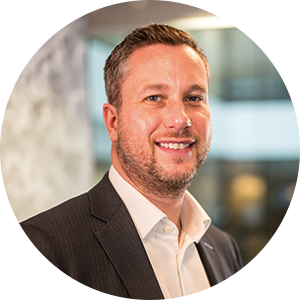A Guide to RPA For Higher Education
In this Guide, Equantiis CEO, Alistair Sergeant, introduces the concept of Robotic Process Automation, what it can do to overcome organisational problems, and where it...

You also don’t need me to tell you that Higher Education is rapidly falling behind the times.
The times of Generation Z, where pretty much every single thing is done online, or via some kind of digital device, whether that’s a smartphone, a tablet, or even wearables. And if it’s not, you can sure as hell bet that technology is involved somewhere along the line.
We as a society are so immersed in digital that I would go as far as to say we rely on it. I mean, take Covid for example. Just imagine how the world would have fallen apart if people couldn’t work from home; if they couldn’t access the data, documents and systems they would usually access; if they couldn’t call or collaborate with colleagues as and when they needed.
For me, it doesn’t bear thinking about. My business would probably would have gone down the pan…
Higher Education has a huge technology debt of legacy systems which aren’t integrated, and business processes that are siloed and inefficiently run. When unprecedented times take hold, like Covid 19, this adds increasing amounts of pressure for HE institutes. Staff members are grappling at shoddy resources trying to pull together some kind of action plan on how remote and online working needs to be rolled out.
Yet, on top of all this, what about the admin tasks? What about all the student enquiries that have come in asking what to do now their physical buildings are shut?
A 14, 15, 16-hour day is probably the answer. But it’s certainly not the right answer, and it’s certainly not sustainable.
A poor experience. A poor experience from staff to students across the board. And as mentioned, this has been especially prevalent over the last year, where the traditional physical classroom moved online. And it moved online overnight.
I guess one benefit of having to rapidly change the ways of working could mean that HE institutes have to change the way they think. They have to change the way they deliver their curriculum. They have to change the way they deliver the student experience as a whole.
From my perspective, they need to provide a 24/7 digital service that creates an immersive experience for staff and students alike. And for a service to be 24/7, it needs to be an organisation-wide approach so the institute can reach those innovation goals. To reach these goals there needs to be cultural change and a change in leadership to see innovation drive forward competitiveness.
But, of course, this doesn’t come without a challenge.
With complex legacy infrastructure, such system changes require large scale transformation projects which often there is no budget, timescale or skill set to do this, and when results are needed now, this seems completely out of reach.
But it doesn’t have to be out of reach. Forget ‘digital transformation’, forget all the buzz words around bleeding edge technology, forget it all.
For positive changes to happen, we need to focus on technology transitions. If we take the commercial sector as an example and look at Intelligent Automation and how this would drive forward changes using robotic process automation, artificial intelligence and machine learning, the smaller quick wins become apparent, and these can have tremendous results.
These technologies are by no means new. They’ve been around a while, but businesses are now realising the true impact they can have. For higher education, this could mean a significant reduction in general administrative tasks that slowly chip away at staff morale. These services can be redefined. Optimised.
I spoke with a HE lecturer from SGS College to gain an understanding as to how siloed systems impacts the teaching staff and students.
By using IA, HE can reduce these laborious administration tasks which in turn allow staff to shift their focus away from mundane jobs and spend more time delivering richer lessons and achieve deeper engagement with students.

In terms of back office jobs, there’s a lot of replication of tasks; this is mainly re-keying information and data logging across different systems. For example, if one of students doesn’t attend a lesson, all registers have to be updated. So while the student hasn’t attended mathematics today, I have to go through all other subject registers and note this information across all. When you have a lot of students, this can easily build to be incredibly time consuming. And this is just the tip of the iceberg. This then impacts our students as we have significantly less time to plan lessons - the quality potentially isn’t as good as it could be because teachers are under a lot of pressure to get the administrative tasks done alongside the demands of being a full-time teacher.
HE lecturer from SGS College
Share this article
Get in touch directly with a consultant - We’d love to discuss how we can help you achieve you project goals.
Get in touch